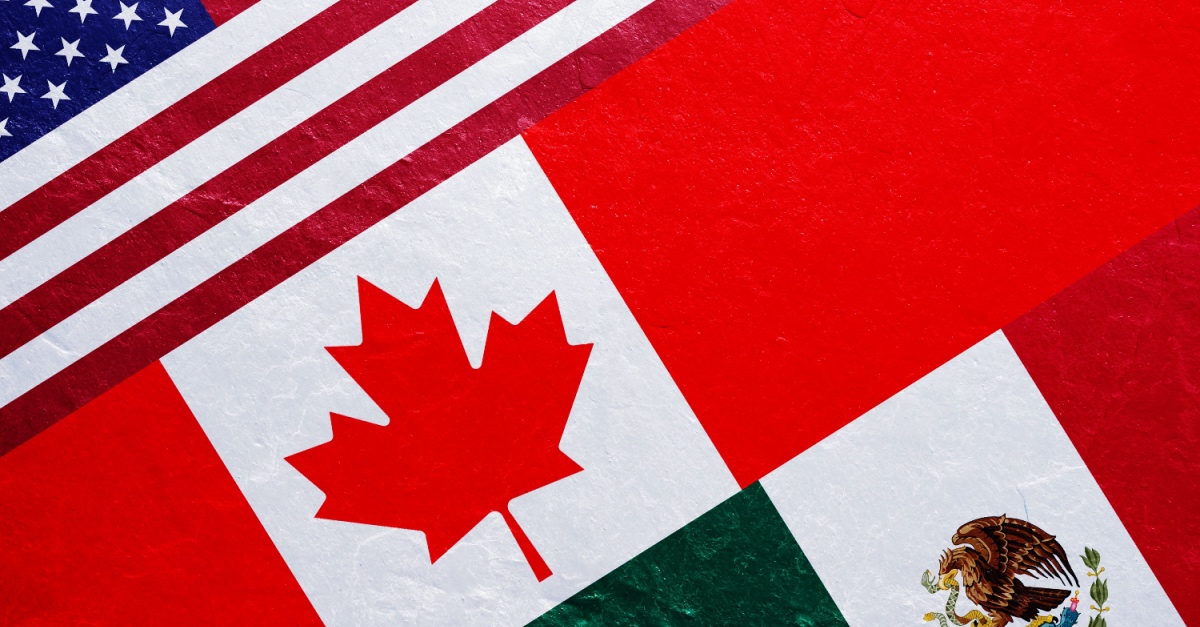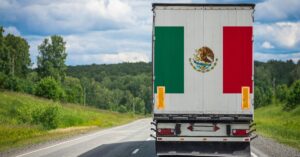The importance of effective cross-border logistics has grown exponentially during the nearshoring movement, spurred by the U.S.-China trade war, COVID-19 supply chain disruption, and North American manufacturing incentives.
The Baker Institute for Public Policy at Rice University said Mexico is an “attractive nearshoring destination due to its geographic proximity to the U.S., participation in free trade agreements, a skilled and cost-competitive labor force, business-friendly programs, extensive logistics networks, experience in manufacturing sectors, and overall economic stability.”
In 2022, new investment accounted for 49.6% of foreign direct investment in Mexico, the highest percentage since 2013, according to the Baker Institute, which said Mexico upset China to become the top supplier to the U.S. market in 2023.
U.S.-based logistics companies need to be ready for the influx of cross-border freight that will result from nearshoring and the growth of businesses already entrenched in Mexico and Canada.
Understanding Cross-Border Logistics
Cross-border logistics is complicated, whether that freight originates in Mexico, Canada, or the United States.
“Tracking orders, determining liabilities for in-transit goods, and meeting promised delivery timeframes can all be more challenging in cross-border trade due to multicarrier handoffs and border delays,” a KPMG report said, noting that cross-border shipping “involves significantly more paperwork than a local shipment.”
Key Challenges in Cross-Border Logistics
The list of challenges in cross-border logistics is long. Challenges include:
- Regulatory and compliance issues.
- Documentation and paperwork.
- Cultural and language barriers.
- Infrastructure and transportation networks.
- Security concerns.
Regulatory and Compliance Issues
“Customs declarations, manifests, product licenses, packaging requirements, expert evidence, and invoices — cross-border trade involves significant documentation which varies by market,” KPMG said. “Simply understanding this regulation provides a challenge to most businesses, let alone full compliance. Certain product categories, such as alcohol, food, cosmetics, and electronics, are more heavily regulated than others, and their restriction/prohibition into certain markets needs to be checked before remaining legal documentation is completed.”
Documentation and Paperwork
The list of documents needed to haul freight across the Mexican border into the United States includes a bill of lading, commercial invoice, carrier information, certificate of origin, and U.S. customs declaration.
Cultural and Language Barriers
In North America cross-border trade, documentation, and communication could be required in Spanish, French, and/or English, further complicating the process.
Infrastructure and Transportation Networks
In February 2022, traffic on the busiest trade bridge between the U.S. and Canada came to a standstill during truckers’ protests over COVID-19 restrictions. Labor strikes, immigration policies, and natural disasters can all affect infrastructure and transportation networks at both the northern and southern borders of the United States.
Security Concerns
In April, Mexico averaged about five cargo truck thefts per day, according to FreightWaves, which quoted Ben Enriquez, head of Mexico logistics and customs for Uber Freight, saying, “In Mexico, they hijack the trucks. They are stopped by two or three cars by people with guns. They jam the GPS, they take the truck. We’re seeing some gangs that are dedicated to getting some specific goods from factories and reselling them.”
Overcoming Cross-Border Logistics Challenges
KPMG said cross-border logistics specialists can manage requirements “efficiently with minimal physical paperwork and reduce the likelihood of incurring fines and compliance issues. Services can include automatically flagging restricted/prohibited products, online customs declaration production, and identification and response to new regulations.”
RJ Logistics is that cross-border logistics specialist. We have a team near the border in Laredo, Texas, that is dedicated to finding solutions for our customers’ cross-border shipping needs and ensuring a seamless experience.
Our bilingual team is skilled in cross-border:
- Customs compliance.
- Insurance coverage.
- Rules and regulations.
- Language barriers.
- Safety considerations.
Trust Your Cross-Border Freight to RJ Logistics
RJ Logistics is an industry-leading provider of cross-border logistics. We stand ready for any and all freight that nearshoring brings.
The RJ Logistics team provides:
- Bilingual communication and updates.
- Cross-border shipping knowledge to ensure compliance with customs processes and international laws.
- Certifications and insurance coverage to guarantee the safety of shipments.
- Inbound services throughout North America.
- Door-to-door services as well as transloading options.
In addition to our Laredo office, we have logistics experts at our headquarters in Southfield, Michigan, and at our facility in Indianapolis. No matter whether your freight is cross-border or domestic, RJ Logistics provides simple solutions to complex problems with state-of-the-art technology, industry-favored customer service, and the drive for mutual success.
At RJ Logistics, we do whatever it takes to deliver for our customers. Whether it’s cross-border shipping, expedited services, or truckload or flatbed freight, RJ Logistics has you covered.
Schedule a call with RJ Logistics today.






